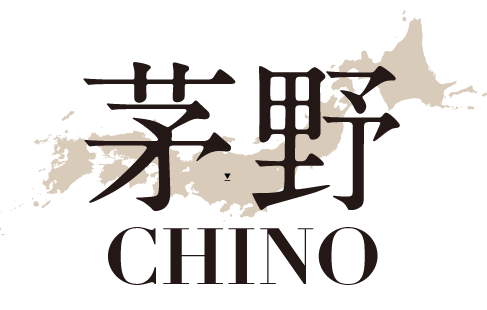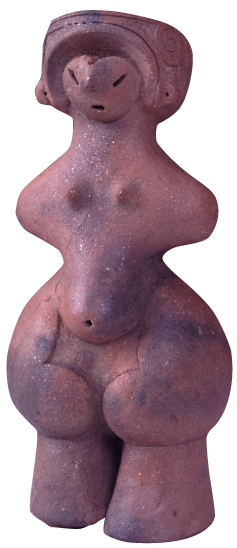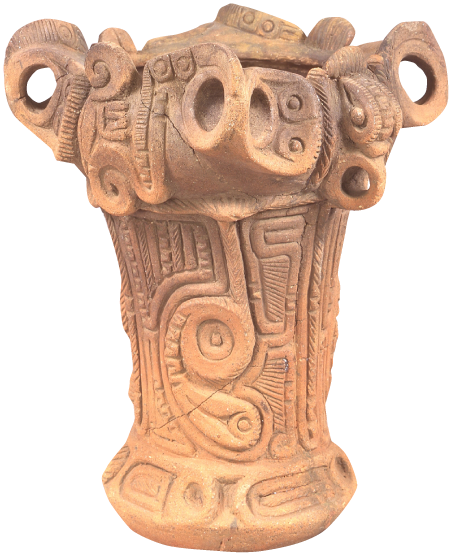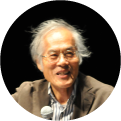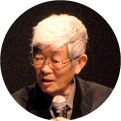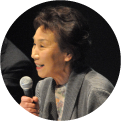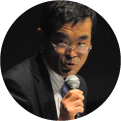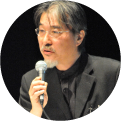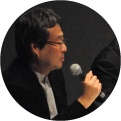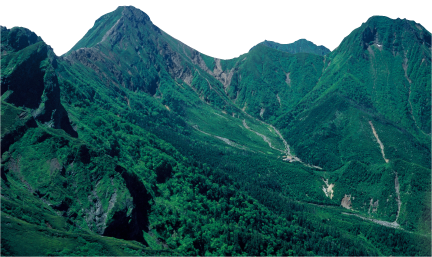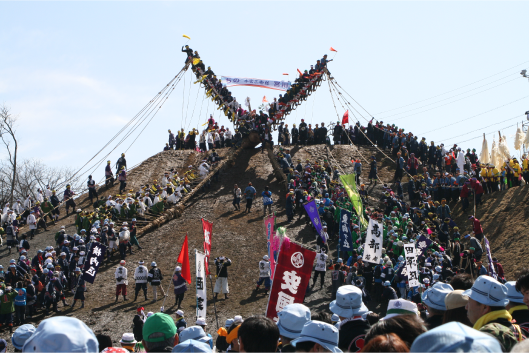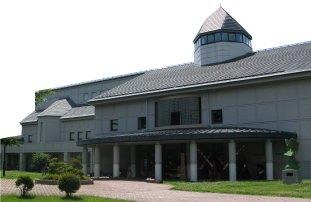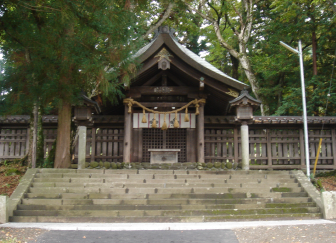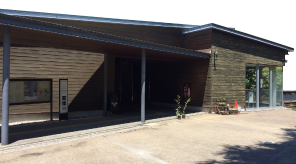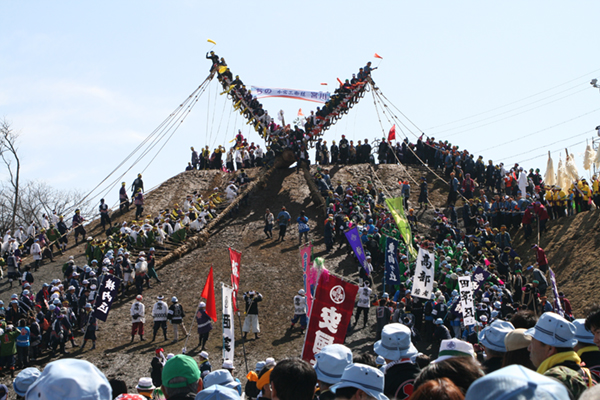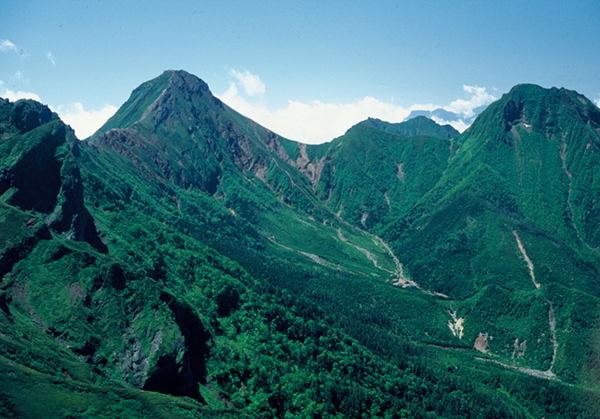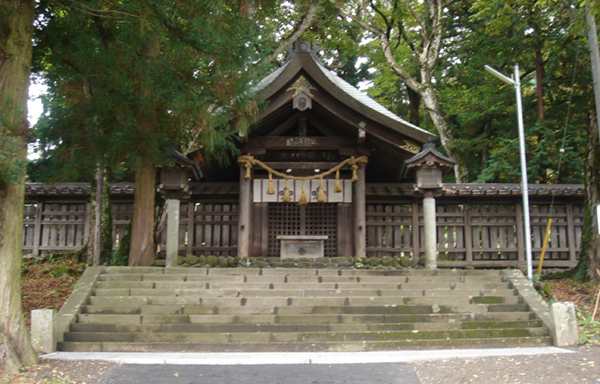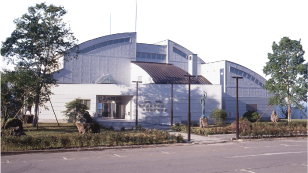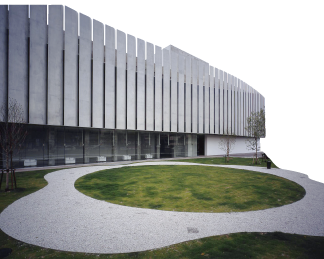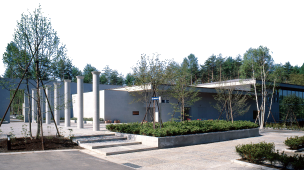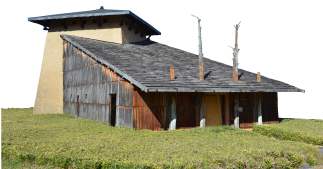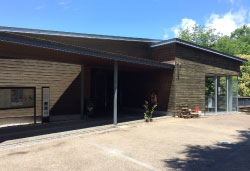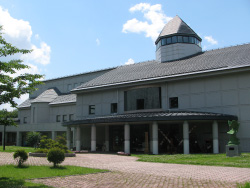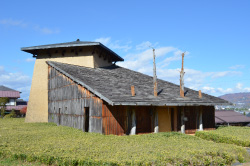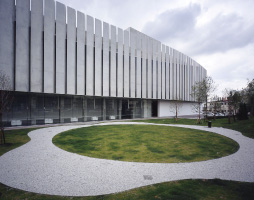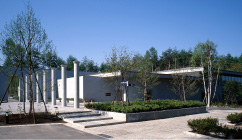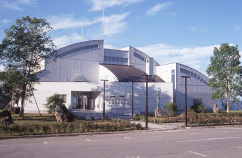Chino, where 5000 years ago and the present connect
FujimoriThe Venus’ of the Neolithic period are discovered all over the world, whereas there is almost none as good as the National Treasure “Jomon no Venus” of the Togariishi Museum of Jomon Archaeology. Not only does it contain religious devotion, but the creators were clearly conscious and aware of the fact that the work will be “seen”. This kind of “cuteness” does not come from other sites.
Human kind’s art history begins from Palaeolithic period cave paintings like Lascaux, but from the Neolithic period, the definig artifacts are Dogu and Jomon pottery. And the Togariishi site is the center of it. Jomon pottery can be unearthed at sites in Yamanashi and Aomori, but Togariishi produces the majority of Dogu and pottery that are artistically beautiful.
SakaiThis was made 5000 year ago? It looks almost like a work of Picasso of Taro Okamoto. Unlike the Yayoi pottery (used in the Yayoi period following the Jomon) which is simple but contains a mysterious energy within, the Jomon pottery is overflowing with roughness and vitality.
FujimoriSome Jomon pottery can be orderly and give off a feeling of tension. Some are made by skilled people, and some not. However, Jomon pottery is not the work of an individual, but the manifestation of a collective creativity. I believe it is rare to unearth such quality artifacts, not only in Japan but on a global scale. And I do think that the local people can pride themselves more in the fact that this land produces some of the most important works of Dogu and pottery in the world.
SakaiI see. In Chino there is also the Jinchokan Moriya Historical Museum, which started Mr.Fujimori’s career as an architect. It’s such a great place. I like that it’s made with materials found in that area rather than making a modern building with luxurious materials.
FujimoriMy father was slightly displeased when the Jinchokan Moriya Historical Museum was made. He couldn’t understand why such an out of date raggedy shack would be built, when it was the city’s request (laughs). But if it looks raggedy, it means it is at least not in the way of the environment.
SakaiThat’s what’s so good about it. The Asahiyama Zoo in Hokkaido is also made with materials they found in the area. “The brilliance of Poverty” resides in such buildings. The first time I came here, Mr.Fujimori said “Would you like to eat this?” and gave me a small nut. You won’t find anybody else who would give a guest a nut that they picked up somewhere (laughs). I feel that such casual actions are reflected in Fujimori Architecture. And I think that is why so many people come to see from home and abroad.
FujimoriI can’t help but feel that Japan is losing important local values due to the rise of tourism and the resulting changes. I believe that facilities should be made more based on the natural features and local history.
SakaiThe proximity to daily life is important, isn’t it? About 5 minutes walk from the Jinchokan Moriya Historical Museum, there are also the “Takasugi-an” and the “Flying Mudboat”, also constructed by Mr.Fujimori. The works are almost like that of modern artist Joseph Beuys. Although I couldn’t enter since I’m afraid of heights (laughs). When visiting Chino, I would be happy to have people see them as well.
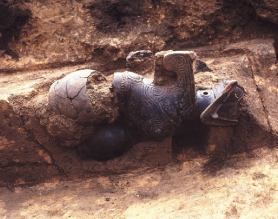
 When the National Treasure “Dogu”<br>the Masked Goddess was unearthed
When the National Treasure “Dogu”<br>the Masked Goddess was unearthed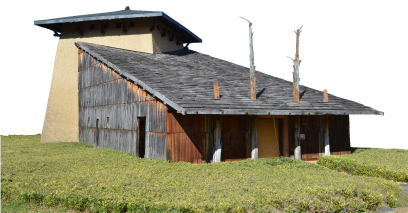
 Jinchokan Moriya Historical Museum
Jinchokan Moriya Historical Museum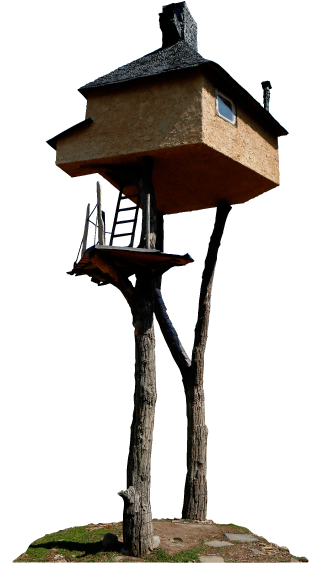
 Takasugi-an<br>The too-high tea house
Takasugi-an<br>The too-high tea house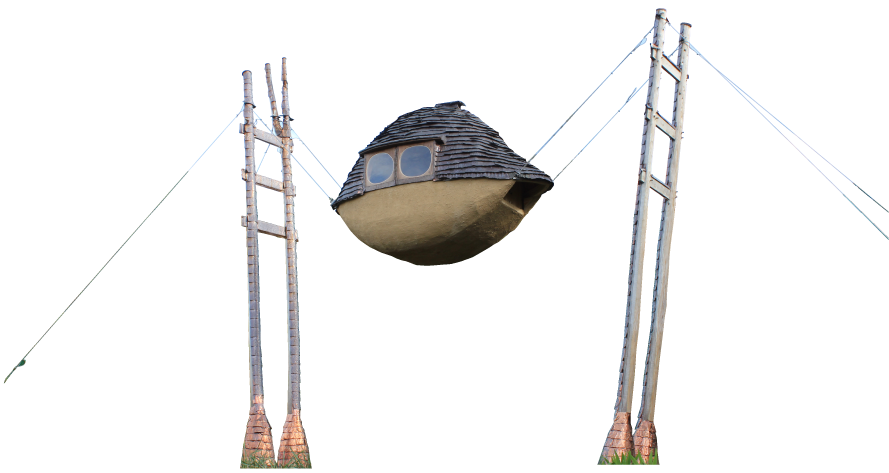
 Flying Mudboat<br>Soratobu Dorobune
Flying Mudboat<br>Soratobu Dorobune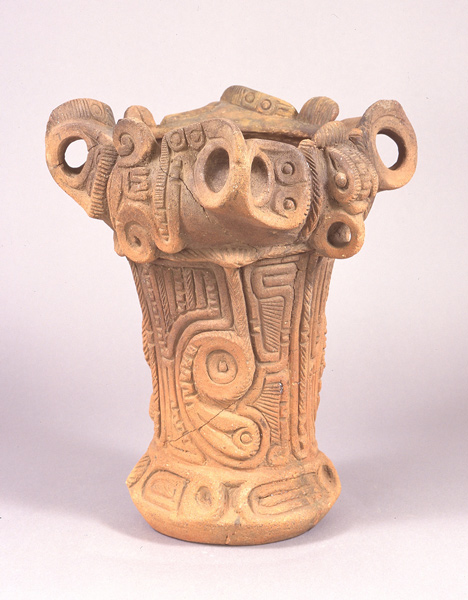
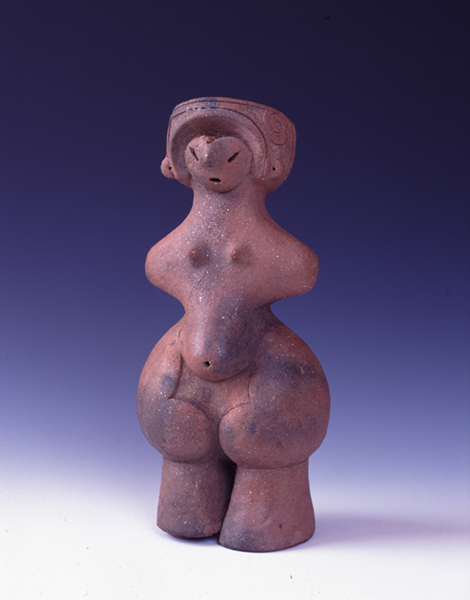
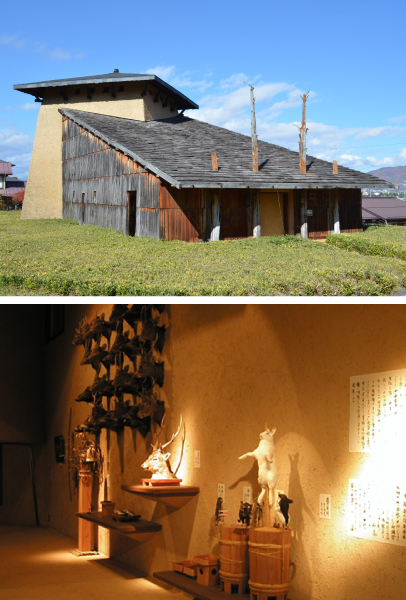
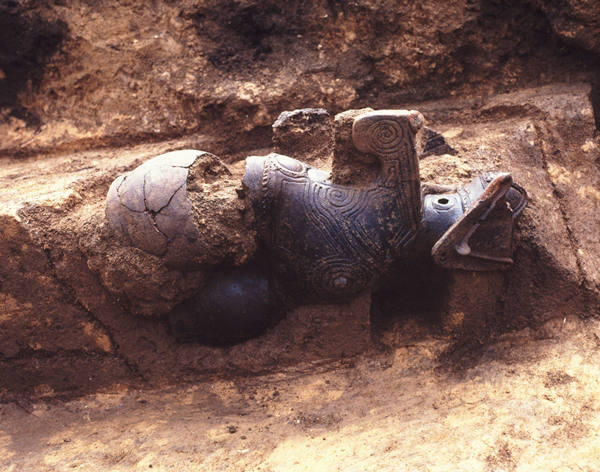
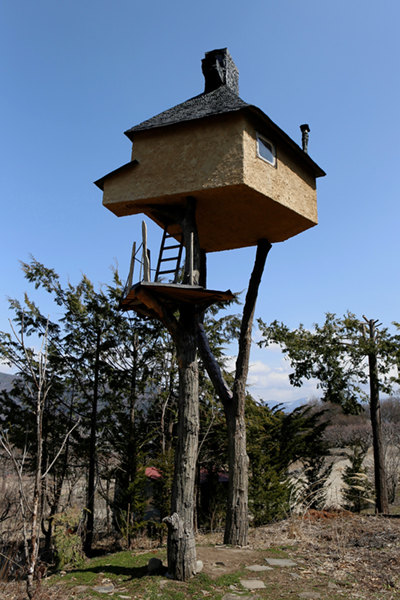
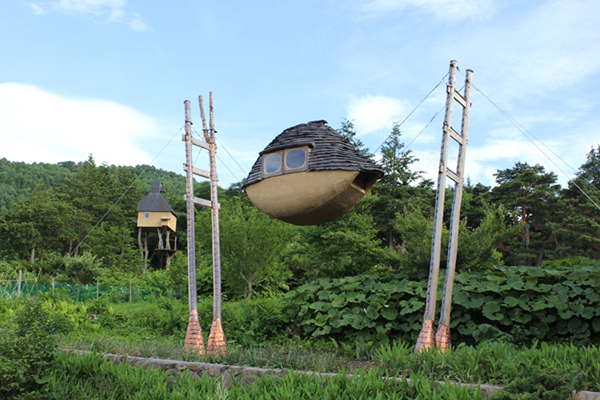
The entire area is a museum!?
TsujinoChino is a rare area with a high concentration of museums, including the Chino Cultural Complex which contains the Chino City Museum of Art, which is conneted to JR Chino station. What do you think is the role of museums in promoting Chino as the “town of the Jomon period”?
IwasakiThe other day, I participated in an event called “Chino Museum Picnic” which was held in cooperation of the 6 museums within Chino city. I have lived in Chino for a long time, but I mainly travel by car so I would always just go to the museums and come back. But this time, I took the bus and discovered the feeling of “cruising” through Chino.
While hearing the guide’s explanation and looking out the window, I began to see the local history and connections previously unknown to me. I knew that there were many tourism resources such as the nature in Yatsugatake and Jomon sites, but I didn’t know that the Otometaki scenery was born from agricultural land development in the Edo period, or that the board for the Kiotoshi ceremony during the Onbashira festival is made from ancient lava flow. Perhaps the role of the Chino museum is to give an opportunity to people to know about this type of unique regional “brilliance”.
SakaiThe museums that were once dots, are now connected with a line. I agree that it is a great idea to capture the entire region as a museum, especially since it is so rich in such attractive regional resources.
MoriyaThe central highlands where Yatsugatake is situated is in what could be called the “navel” of Japan. I think this remarkable Jomon culture developed exactly because it was a place where the culture of western and eastern Japan collide. I want locals to understand the charm of this land where “Jomon” can be felt and related to, and that this is a town where National Treasures are unearthed from the ground beneath their feet. For that, I think we and the museum must promote history, as well as the surrounding environment including Yatsugatake’s nature and Jomon sites.
FujimoriI do believe the surrounding environment has an effect on the museums. Otherwise there would be no point coming from far places. I would like people to see the Yatsugatake Museum and Koyodo Museum of Art, the Tateshina Kogen Museum of Art together with Yatsugatake’s nature, and the Jinchokan Moriya Historical Museum and Suwa Taisha together as a set.
TokunagaEvery town has a cultural resource. But it often happens that the local citizens are the ones least aware of it. That would, of course, be a waste. I believe the role of the museum is to discover and protect these local cultural resources, and make them known.
Make use of the region’s “Jomon power”
SakaiThe feeling of connection to the area must be developed more in the field of education. You needn’t do anything sophisticated like drawing or painting. Start with playing in the mud. I think there is a need to regain roughness, and be more wild. I want to have art and gym classes together, and for the museum to create oppotunities to learn about the cycles of nature.
FujimoriI grew up in Chino without thinking about “Jomon” too much. When you are born around here it feels like air, always around you. But recently, people have started telling me something. That “There is no other region which connects 5000 years ago to the present day”. Since then, I’ve begun to think about Jomon.
Even looking at the size of the Jomon pottery, it is interesting. You can imagine how they used to store so much food in it. Chino’s museums all have pottery making workshops and organize various educational activities, but I would like to see elementary and middle schools have a class about deer hunting. It would be great if this area could pride itself in the fact that it still carries the strength and courage of the Jomon people, which could survive even after the destruction of civilization.

